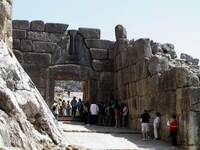- England
- Scotland
- France
- Holland
- Germany
- Italy
- Spain
- Portugal
- USA
- China
- Japan
- India
- Iran
- Advice
- Gardens
- England
- Scotland
- France
- Holland
- Germany
- Italy
- Spain
- Portugal
- USA
- China
- Japan
- India
- Iran
- Advice
- Garden Tours
Book: Landscape Planning and Environmental Impact Design: from EIA to EID
Chapter: Chapter 11 Urbanisation and growth management
If footpaths and cycleways are to be attractive they must be direct and should be laid out before roads or buildings are positioned. Initially they should run alongside streams, hedgerows, ponds and other landscape features. Pedestrian routes can then form a starting point for the layout of buildings, as did the roads and tracks which predated building in the old towns. Each architect's response to the presence of a footpath will reinforce the importance and significance of the route. The footpath to Mycenae was, and is, a defining feature of the town. The Gilbey's Gin building in Harlow is a good example of how this can work [Fig 11.20]. It sits astride one of the main footpaths like a gate to an ancient or medieval town. A similar effect was achieved in the Seafar scheme at Cumbernauld [Fig 11.21]. The best cycleways in Harlow are the old lanes, from which motorised vehicles are now excluded. The first roads in Tapiola turned out to be too narrow when the town expanded and have been converted into pedestrian paths. This is better than providing too much road space in the early years. Many new towns have cycleway systems which did not receive priority in planning and are unsuccessful as commuter routes. In Harlow, Stevenage and East Kilbride the cycleways are wide enough to be singleï¾track roads and too often they run alongside main roads. Cyclists in these towns find it simpler to ride either on the roads, which can be followed at intersections, or on footpaths, which are sufficiently direct to be attractive as cycleways and give direct access to houses and schools, without the cyclist having to bump over 150mm curbs. In London's Hyde Park the use of a kerb to separate cyclists from pedestrians has been found unnecessary, because cycle speeds are low. Some cyclepaths, like those which run along old country lanes in Harlow, or streams elsewhere, are very pretty. The combined leisure and commuting cycleway system in Milton Keynes was discussed in the preceding chapter (cross ref). It is a reminder of the complexities of planning, and the need to involve a wide range of specialist groups. Most roads in Britain's postï¾war new towns are aesthetically dull. There are few new streets which can stand comparison with the elegant avenues in the preï¾war garden cities of Letchworth and Welwyn. Nor do purelyï¾functional roads compare with the avenues of Paris or Washington D.C., with The Ringstrasse in Vienna, or with Princes Street, Moray Place and The Mound in Edinburgh [Fig 11.22]. Nor are there any dignified high streets, winding roads or country lanes of the type which attract visitors to English villages. In Bracknell New Town, the old village high street was demolished and rebuilt, at great cost, as a windswept shopping mall fronted by modern buildings (Parris & Paris 1981: 32). Good streets could not be made in the British new towns because the roads were designed, as explained in the previous chapter, according to rigid functional criteria and arbitrary rules. Rassmussen was amazed at the waste of land on road space at Harlow and questioned the design team about it in the 1950s: 'One of the planners apologetically said to me that it was caused by the road engineers' exorbitant demands.....I must confess that it shocked me that when planning eight new towns there was no time to discuss such fundamental principles' (Rassmussen 1982: 439). Wastage of land on roads became even worse in the new towns of the 1960s. But if overï¾capacity, or wide verges, are the result of a deliberate aesthetic policy, perhaps to make an avenue, it may create a sense of grandeur. Likewise, deliberate underï¾capacity can produce a sense of intimacy and charm, as in narrow lanes and medieval towns [Fig 11.23]. Highway design criteria should therefore be relaxed, for spatial and aesthetic reasons, and roads integrated with buildings, mounding and planting. It is desirable to have one street which yields a synoptic view of the town's character.
